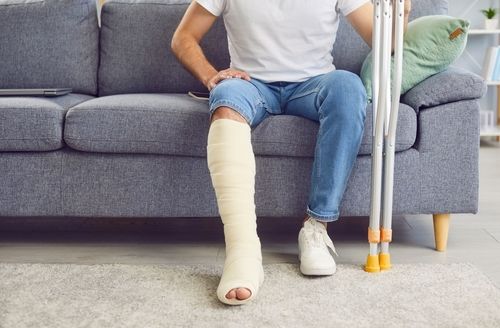Hand therapy is a form of rehabilitation focused on treating injuries and conditions affecting the hands, wrists, and upper extremities. Whether you are recovering from surgery, managing a chronic condition, or dealing with the aftermath of a traumatic injury, hand therapy offers targeted techniques to restore functionality, reduce pain, and improve overall quality of life. Through customized care provided by physical therapists, patients can regain strength, mobility, and confidence, enabling them to return to their daily activities and professional duties with ease.
In this blog, we discuss how hand therapy treats injuries, its benefits, and when to see a physical therapist in Charlotte for personalized care.
Common Conditions Treated by Hand Therapy
Hand therapy can help with many conditions that affect the hands and upper extremities. Here are some of the most common:
Carpal Tunnel Syndrome
Carpal tunnel occurs when the median nerve in the wrist gets compressed and causes numbness, tingling, and weakness in the hand. This is often caused by repetitive tasks like typing. Hand therapy uses exercises, manual therapy, and splinting to relieve pressure and restore function.
Trigger Finger
Trigger finger is caused by inflammation in the tendons of the fingers which can cause stiffness, pain, and a snapping sensation when moving the affected digit. Hand therapy can reduce inflammation and improve mobility with stretching, strengthening exercises and manual therapy.
Tendon and Ligament Injuries
Tendons and ligaments play critical roles in hand and arm movement. Injuries such as strains, tendonitis, or ligament tears can limit functionality and cause pain. Physical therapists use therapeutic exercises and splinting to promote healing and restore strength and range of motion.
Arthritis
Arthritis in the hands, wrists, or fingers can cause chronic pain and stiffness, making daily activities challenging. Common symptoms of arthritis include swelling, pain, and stiffness in the joints. Hand therapy provides targeted exercises, joint protection techniques, and pain management strategies to improve mobility and reduce discomfort.
Fractures and Dislocations
Bone fractures and joint dislocations in the hand, wrist, or forearm often require hand therapy to regain strength and proper alignment. Therapy focuses on exercises, mobility restoration, and pain relief to support a full recovery.
Dupuytren’s Contracture
Dupuytren contracture causes thickened tissue in the palm to pull fingers into a bent position, limiting hand function. Exercises that involve keeping the fingers straight can improve flexibility. Hand therapy helps manage symptoms through stretching, splinting, and other non-invasive interventions to improve flexibility.
Nerve Disorders
Nerve damage or compression, such as from trauma or conditions like cubital tunnel syndrome, can cause pain, numbness, or tingling. Exercises involving the index finger, such as spinning a pen, placing coins, and interacting with clothespins, are designed to improve fine motor skills and hand function. Hand therapy targets these issues with nerve gliding exercises, splinting, and functional training to improve sensation and coordination.
Crush Injuries and Trauma
Significant injuries to the hand or arm, such as those from accidents or machinery, may lead to severe damage and reduced function. Hand therapy plays a crucial role in rehabilitation, focusing on regaining strength, range of motion, and fine motor skills.
Signs You May Need Hand Therapy
Recognizing the signs that indicate a need for hand therapy is essential for addressing issues early and improving recovery outcomes. Below are key signs that you may need hand therapy:
Difficulty with Daily Activities
If tasks such as brushing your teeth, cooking, typing, or opening jars have become challenging, it may be a sign of reduced hand function. Hand therapy focuses on restoring strength, flexibility, and coordination to help you regain independence in daily activities.
Problems with Fine Motor Skills
Trouble with tasks like buttoning a shirt, tying shoes, or handling small objects may be a sign of intervention needed. Physical therapists can assess and address dexterity deficits with exercises tailored to fine motor skills.
Persistent Hand Pain
Pain in the hand, wrist, or arm that persists can interfere with work, hobbies, and daily activities. A physical therapist can use manual therapy, modalities, and customized exercises to relieve pain and get you back to normal function.
Numbness or Tingling in the Hands
Numbness or tingling, often caused by nerve compression or injury, can impact hand use. Hand therapy will identify the underlying cause and provide exercises like nerve gliding to reduce symptoms and get you comfortable.
Swelling or Stiffness
Swelling or stiffness, especially if it’s frequent or limiting movement, is a common sign of underlying issues like arthritis or tendon injuries. Hand exercises can help reduce swelling and stiffness, improving joint flexibility and range of motion. Hand therapy will do edema management and mobility exercises to reduce these symptoms and get you back to hand function.
Challenges Returning to Work
After a hand injury, going back to work can be physically and emotionally tough. Whether your job involves typing, lifting, or operating machinery, a physical therapist can design a rehabilitation program specific to your job demands.
Recent Surgery on the Hand or Wrist
Post-operative recovery often requires specialized care to regain function and prevent complications. Hand therapy provides guided exercises, pain management, and custom splinting to support a safe and effective healing process.
Need for Splinting or Bracing
If your doctor has recommended immobilization for a condition like tendonitis or arthritis, or for post-surgical recovery, a physical therapist can create custom splints or braces that offer both protection and comfort.
Difficulty Recovering from a Hand Injury
Struggling with mobility or strength after an injury may indicate the need for professional assistance. Hand therapy focuses on rehabilitation strategies to help you recover fully and efficiently.
Hand Therapy Treatment Techniques
Hand therapy uses many specialized techniques to treat conditions, improve function and support recovery. Here are some of the hand therapy techniques used:
Therapeutic Exercises
Strengthening and stretching exercises are important to get mobility back and build hand and arm strength. Ensuring the correct position of the palm facing either up or down during these exercises is crucial for proper form and effectiveness. Therapists guide patients through specific movements to address specific impairments such as limited range of motion or reduced grip strength.
Manual Therapy
Manual therapy is a hands-on technique to mobilize joints, improve circulation, and reduce tension in soft tissues. This can help reduce pain and stiffness and improve overall function.
Custom Splinting and Orthotics
For injuries or chronic conditions that need stabilization, therapists design custom splints or orthotic devices. These provide support, improve alignment, and aid in the healing process and are tailored to the patient’s unique anatomy.
Edema Management
Swelling in the hand or arm can limit function and be uncomfortable. Techniques such as manual edema mobilization, compression garments, and elevation are used to reduce fluid and get movement back.
Scar Management
Scar tissue resulting from injuries or surgeries can restrict motion and lead to discomfort. Therapists use techniques like massage, stretching, and other interventions to minimize the impact of scar tissue and improve mobility.
Pain Management
For chronic or post-injury pain, therapists use various modalities such as ultrasound, transcutaneous electrical nerve stimulation (TENS), and heat or cold therapy. These are often used in combination with exercises for maximum effect.
Nerve Gliding Exercises
For conditions with nerve compression or damage such as carpal tunnel syndrome, nerve gliding exercises are prescribed to reduce pressure and improve nerve function. Passive exercises are also an essential part of therapeutic home exercise programs for individuals with neurological injuries, as they help prevent muscle stiffness and ensure joint flexibility. These are gentle and aim to get the nerves moving smoothly within their pathways.
Functional Training
Therapists use task-specific training to help patients get back to work or daily activities. This can include simulated tasks and ergonomic adjustments to ensure safe and efficient movement.
Benefits of Hand Therapy
Hand therapy offers a range of benefits for individuals recovering from injuries or managing chronic conditions. Its holistic approach addresses the physical, functional, and emotional aspects of recovery.
Restores Functionality
One of the biggest benefits of hand therapy is restoring strength, range of motion, and dexterity in the hands and upper limbs. With customized exercises and treatments, you can get back to doing daily tasks and work with confidence.
Reduces Pain and Discomfort
Chronic pain or discomfort in the hands and arms can be debilitating. Hand therapy uses targeted techniques such as manual therapy and pain management modalities to reduce symptoms and increase comfort.
Accelerates Recovery
Whether you’re recovering from surgery, trauma, or a repetitive strain injury, hand therapy can speed up the process. By addressing the underlying issues with specialized treatments, you’ll get back to normal activity levels quicker and more efficiently.
Enhances Quality of Life
For individuals living with conditions such as arthritis or nerve disorders, hand therapy provides strategies to manage symptoms effectively. This leads to an improved ability to engage in hobbies, work, and daily routines without unnecessary limitations.
Prevents Further Complications
Without proper intervention, some conditions can worsen or lead to other issues, such as muscle atrophy or joint stiffness. Hand therapy focuses on proactive care, helping to prevent complications and maintain long-term hand health.
Offers Personalized Care
Hand therapy programs are designed for each patient. This means the treatment plan addresses your specific needs and goals.
Seek Treatment From an Experienced Charlotte Physical Therapist ASAP!
If you’re dealing with hand pain, stiffness, or difficulty completing everyday tasks, hand therapy could be the solution you need to regain your strength and mobility. At Apex Orthopaedics Spine & Neurology, our skilled team is dedicated to providing personalized care to help you recover and return to the activities you love.
Schedule an appointment with us today at 704-412-3045!





